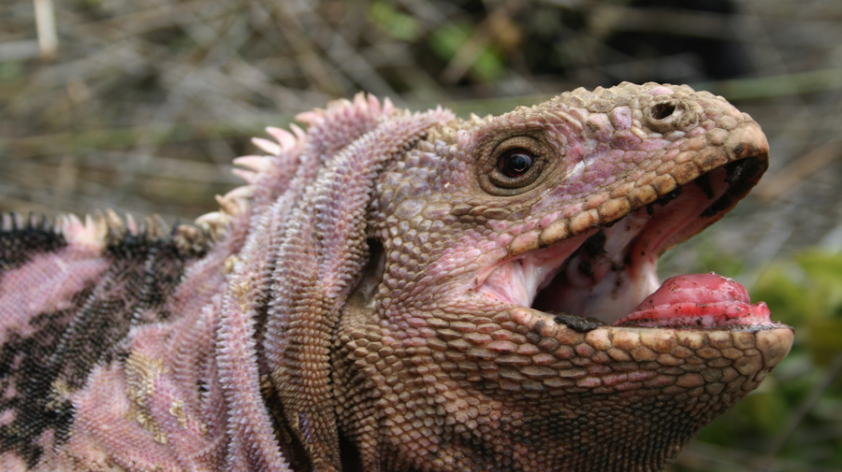
Tracking the critically endangered Pink Iguanas of the Galápagos
The Galápagos remind us of giant tortoises, hammerhead sharks, black iguanas at sea, birds with blue feet, and many other species that can only be found on those islands far off the coast of Ecuador. This archipelago is also home to the elusive and critically endangered pink iguanas, Conolophus marthae.
Described in 2009, this species can only be found in a small and remote area at the very top of Wolf Volcano, an active volcano on Isabela Island. The population of pink iguanas is currently estimated between 200 and 300 animals, persisting in an area of about 10 square kilometers. No direct access to the volcano exists, and the logistics to organize fieldwork in the area are extremely complicated.
One of the greatest concerns for the conservation of this species is that in the last decade juvenile pink iguanas have not been observed. This, together with the high percentage of recaptured individuals, suggests that recruitment of new individuals in the population is effectively absent. Feral cats are among the causes believed to be responsible for such low recruitment. Nesting ground competition with the sympatric yellow iguanas, Conolophus subcristatus, is another possible cause, although less likely.
To harvest important ecological data for the development and implementation of an appropriate conservation strategy my colleagues from the University of Rome Tor Vergata (Drs. Gabriele Gentile, Pierpaolo Loreti, Lorenzo Bracciale, Massimiliano de Luca and Alexandro Catini) developed a tracking device that will allow the remote monitoring of the pink iguanas, by passing the need for prolonged field seasons on Wolf Volcano. With the financial support from the Institute for Conservation Research, we were able to produce 60 of these devices.
One of the main goals this project aims to achieve is a better understanding of pink iguanas’ habitat usage and the identification of nesting grounds. The application of our long-term, animal-tracking technology will allow us to achieve this goal. These devices have been engineered using products to reduce potential toxicity to the environment. The use of lithium batteries has been avoided; instead we equipped the devices with solar panels and a super capacitor to power a series of sensors (GPS, UV light reader, thermometer and hygrometer). The small antenna in the front will transmit the collected data to a ground station equipped with a satellite antenna for data transmission to our servers.
During our most recent trip to Galápagos in December 2018 we were able to run some tests taking advantage of specimens of yellow iguanas housed in enclosures at the Galapagos National Park. The communication infrastructure performed well. Preliminary tests done in Italy on the transmission data range between each device and the ground station reached up to 10Km with line of sight. Our tests in the Galápagos revealed that the data range is drastically reduced by the ground asperity and vegetation. Although this can represent an impediment for the prompt collection of the data, each device is equipped with a 250MB flash memory card that allows the safe and secure storage of the data. When the iguana gets within range of the ground satellite antenna all the data collected on the flash memory are then transferred to our servers.
We are now in the process of organizing an expedition to Wolf Volcano in June 2019 to install the ground satellite station and the first 60 GPS devices we produced.













